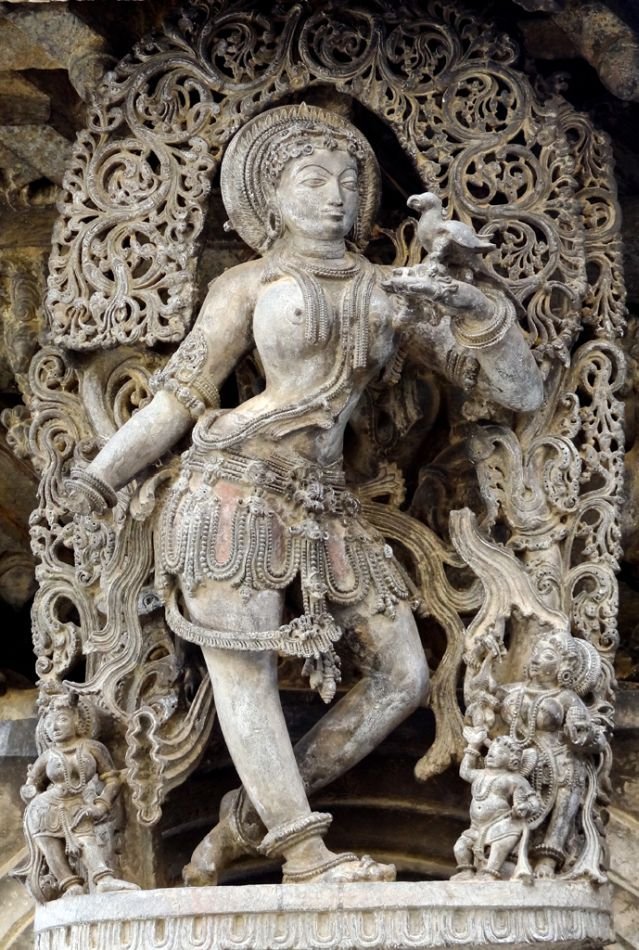(This article is a part of our ongoing series on Carnatic Music. Although the article can be read on its own, the previous parts can be found here)
To kickstart our journey into Carnatic Music, we pick a raga that makes my job easier. Having no background whatsoever in Carnatic and a reasonable background in Hindustani music, I have picked a Raga which is a direct import from Hindustani. The popular Hindustani raga Bihag when borrowed by our Carnatic brethren becomes Behag. Largely used for short pieces and light songs sung at the tail end of the concerts, the raga has been increasingly gaining popularity in the Carnatic circles.
The Hindustani Raga uses the following scale predominantly:-
Aaroh (Ascending):- Ni Sa Ga ma Pa Ni Sa
Avroh (Descending):- Sa Ni Dha Pa Ma Pa Ga ma Ga Re Sa
The phrases Pa Ma Pa Ga ma Ga which beautifully plays around the distinctive signatures of the two Madhyams (Ma being the teevra Ma- the higher/sharper variant while ma being Shuddha Ma-the lower/flatter variant).
Now, before we get bogged down by the technicalities of it, let us get straight down to the music. The piece I have selected is a rendition of the Raga by popular vocalist T. M. Krishna. Krishna is accompanied by the brilliant and cheery Akkarai Subhalakshmi on vilion, Manoj Siva on Mridangam and Anirudh Athrey on Kanjira. It is a part of a full length concert from 2017 where Krishna was in sublime form. I am hoping to pick up some more pieces from the concert as we get deeper into the series.
The song that Krishna sings has been penned down by famed Kannada author/poet DV Gundappa and is called “Ene Shukabhashini”. He wrote a series of 60 songs in awe of the beauty of sculptures and architecture of the temples of Belur. Each song is associated with a specific sculpture and the published book has the photograph of the particular sculpture alongside each song. DVG, as he was popularly known as, went to the extent of suggesting the Raga and Tala (beat cycle) of these songs as well.
I found the following translation and the image of the sculpture here:-
“What are you up to ? Oh! Beautiful, the one who speaks with the parrot !
What’s the news, Oh! the one who brings rejoice to the soul ?Who are cursing and to whom are you praising ?
What secrets are you sharing with your beloved parrot ?Are you sharing your worries ? or your delightful thoughts ?
What secret happiness are you sharing with the bird ?
What is the Love message that you are sending to your beloved (Kanta)?
Oh! Beautiful, tell me, I am being perturbed !Why do you trust this wild parrot ?
Why would you tell it your inner most secrets ?
Don’t you trust anybody else to convey your message to Chennakeshava ?,
The Wise who could describe your Beauty ?”
At 0:50 when Krishna moves around the scale to start presenting the Raga, his mellifluous voice hits you. His chemistry with the violinist is stuff made of dream and hooks you in to the performance. At 1:19, he hits with you a series of well-crafted and pleasant musical phrases. At 1:34, he beings the song which uses a series of simple note sequences, just how DVG had envisioned in his subsequent editions of the book. With every passing minute in the piece, one can admire the skill of the smiling violinist and her equation with Krishna.

The composition continues to remain beautiful, but the part at 3:24, the last sentence of the Sthayi ties the whole thing back to the first line in splendid fashion. Whenever I listen to the piece, I can’t resist rewinding 10 seconds to get a second sip of this wonderful cocktail of notes. A similar thing happens in the second stanza around 4:55 when a similar note sequence draws an involuntary appreciative “aah!” out of me every time.
At 5:30, he opens his bag of tricks to display a meend (glide of notes) which is a distinctive marker of the Hindustani Raga Bihag. At 7:02, he plays around a combination of lower notes that adds to the happy and romantic flavor of the Raga. He ends the piece without any major improvisations or decorative phrases, keeping the listener longing for more. The listener is me is certainly longing for more. What about you?

Everything is ideal from the radio to the cup holders to atmosphere conditioning.
Needless to day, all the facilities a traveler which may need can be found at this point.
In winters it is essential to obtain snow car tyres.bv http://Smi.T.Hwangqingpenglongxunqu.N@918.Cafe%2Fhome%2Fjoker-123%2F56-joker123
LikeLike